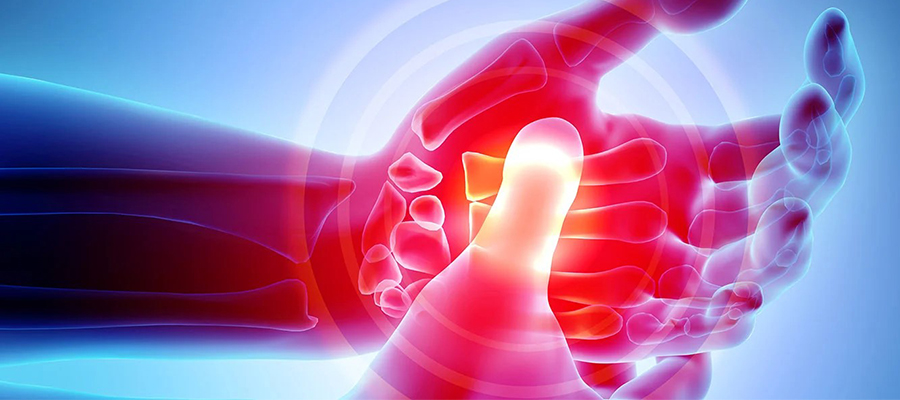
Rheumatoid pain is a symptom associated with Rheumatoid Arthritis (RA), a chronic autoimmune condition that primarily affects the joints. It occurs due to inflammation in the joint lining, leading to swelling, stiffness, and tenderness, often accompanied by systemic symptoms. If left untreated, it can result in joint damage and deformities.
Causes
- Autoimmune Response : RA occurs when the immune system mistakenly attacks the synovium (the lining of the joints), leading to inflammation, pain, and eventual joint damage.
- Genetic Factors: If a family member has RA, the likelihood of developing the condition is higher.
- Infections: Some viral or bacterial infections may trigger immune system overactivity, leading to RA onset.
- Poor Gut Health (Gut Microbiome Imbalance)
- Physical Inactivity
Symptoms
- joint-Related Symptoms
- Morning Stiffness
- Weight Loss
- Muscle Weakness
- Low-Grade Fever
Treatment
Diagnosis
Orthopedic specialists perform a thorough evaluation to identify the root cause of Rheumatoid pain. This may include:
- Medical History and Physical Examination
- Laboratory Tests
- Imaging Tests
Non-Surgical Treatments
- Physical Therapy
- Medications
- Pain Management Techniques
- Lifestyle Modification
- Assistive Devices : Splints, braces, and ergonomic tools can provide joint support and reduce strain.
Surgical Treatments
- Synovectomy : Removal of the inflamed synovial lining in joints to reduce pain and swelling.
- Joint Replacement Surgery (Arthroplasty) : Replacing a damaged joint with an artificial one, commonly performed on knees, hips, or shoulders.
- Tendon Repair : Tendons around the joints may become damaged or ruptured due to chronic inflammation. Surgical repair restores functionality.
- Debridement
Advanced Technologies
- Cryotherapy and Laser Therapy
- Technology in Rehabilitation and Pain Management
- Biomarker Testing and Genomic Analysis
- Biomarker Testing and Genomic Analysis
Prevention of Rheumatoid Pain
Orthopedic specialists often emphasize the importance of prevention through:
- Reduce Exposure to Pollutants and Infections
- Early Diagnosis and Treatment
- Avoid Smoking
Preventing rheumatoid pain involves adopting a healthy lifestyle, avoiding risk factors, and being proactive with early detection. While the condition may not be entirely preventable, these strategies can significantly reduce the likelihood of severe pain, flares, and joint damage, allowing individuals to lead a healthier, more active life.